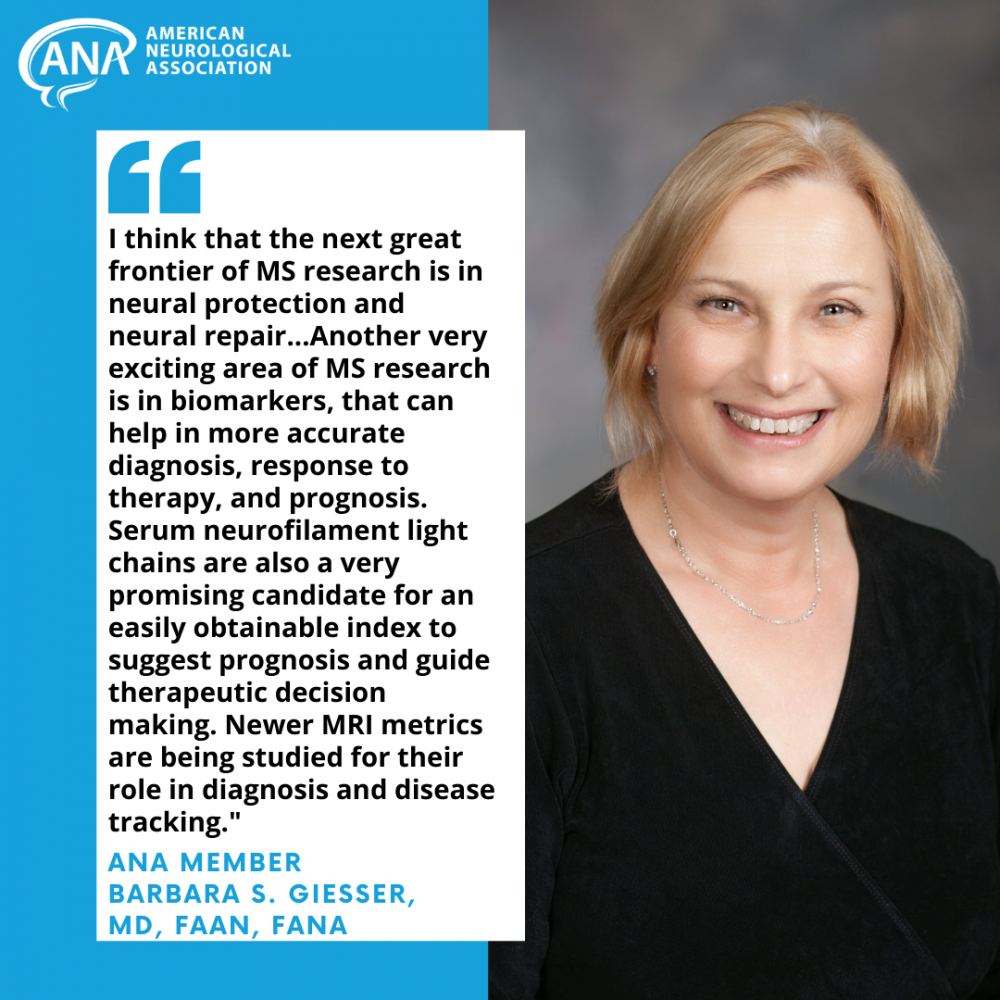ANA talked to Barbara S. Giesser, MD, FAAN, FANA, an internationally recognized clinician who has specialized in the care of persons with multiple sclerosis (MS) since 1982. Dr. Giesser is also a past chair for the ANA Public Policy and Relations Committee. She speaks about treatment options for MS, the next frontier in standard treatment, and her involvement with ANA.
What does the public need to understand about multiple sclerosis that it often doesn’t?
Just because MS is not (yet) curable, that does not mean that it is not treatable. Standard of care for persons with MS today includes administration of highly effective disease modifying therapies (DMTs) that reduce clinical relapses, inflammation, formation of new plaques, and slow progression. Function and quality of life are enhanced with use of symptomatic medications and rehabilitative and lifestyle strategies. MS is one of the few neurologic diseases where the actual pathophysiology of the disease can be modified, instead of just ameliorating symptoms.
Persons with MS may have their ability to function compromised by the so called “invisible symptoms.” These may include fatigue, cognitive dysfunction, pain, genitourinary problems and/ or depression. It may often be difficult for friends and family to appreciate these impairments that may not be immediately obvious.
How are treatment options for multiple sclerosis different today from 10 years ago?
Today, there are almost three times as many FDA-approved disease modifying therapies as there were in 2011, and some of these medications are also approved for the progressive forms of the disease. There are also more meds for symptom management. Importantly, there is increased evidence-based understanding of the importance of lifestyle choices, specifically diet and exercise, in managing MS.
What promising research is poised to change the standard of treatment for multiple sclerosis?
I think that the next great frontier of MS research is in neural protection and neural repair. There are many promising studies demonstrating repair in animal models of MS, and a few phase one studies suggest that this can be accomplished in people. Therapeutic strategies are being developed to enhance the innate remyelinating mechanisms in the CNS, as well as introduce exogenous ones.
New classes of DMTs are still being developed. A novel class of DMTs that has generated much interest are Bruton’s tyrosine kinase inhibitors, which are already in use to treat some malignancies, and which affect immunomodulation in MS differently than current DMTs.
Another very exciting area of MS research is in biomarkers, that can help in more accurate diagnosis, response to therapy, and prognosis. Serum neurofilament light chains are also a very promising candidate for an easily obtainable index to suggest prognosis and guide therapeutic decision making. Newer MRI metrics are being studied for their role in diagnosis and disease tracking.
How has the ANA supported your career and/or work in this area?
I have participated in formal advocacy initiatives at state and federal levels for our patients and our profession for over a decade. More recently, I had the privilege of serving as Chair of the ANA Public Policy and Relations Committee. In this capacity, we were able to help ANA membership be aware of and advocate for important legislation to increase access to neurologic care and increase funding for neuroscience research and education.
Want to learn about more of the groundbreaking research being conducted by ANA members? Read past editions of The ANA Q&A.

